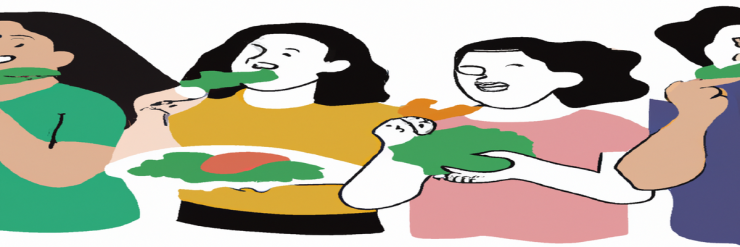The Low-Histamine Diet

How To Avoid Histamine-Rich Foods?
Histamines are naturally occurring compounds found in many foods, and while they are harmless to most people, they can cause allergic reactions and symptoms in some individuals. These symptoms can range from mild itching and hives to severe abdominal pain and even anaphylaxis. This is why a low-histamine diet is sometimes recommended for people with histamine intolerance.
A. What is Histamine Intolerance?
Histamine intolerance is a condition where an individual's body is unable to properly break down and eliminate histamines, leading to symptoms such as headaches, skin rashes, abdominal cramps, and diarrhea. This condition can be caused by a deficiency of the enzyme diamine oxidase (DAO), which is responsible for breaking down histamines in the gut.
B. What are Histamine-Rich Foods?
Many foods contain high levels of histamines, which can trigger symptoms in people with histamine intolerance. Some of the most common histamine-rich foods include:
1. Alcoholic beverages, especially red wine and beer.
2. Processed meats such as deli meats, sausage, and ham.
3. Fermented foods such as sauerkraut, pickles, vinegar, and soy sauce.
4. Smoked fish and aged cheeses.
5. Certain fruits and vegetables, such as strawberries, tomatoes, avocados, and eggplants.
6. Nuts, chocolate, and certain spices.
C. Most Common High-Histamine Foods
1. Alcoholic beverages.
2. Fermented foods, such as yogurt, kefir, and sauerkraut.
3. Vinegar-based condiments, such as pickles and salad dressings.
4. Smoked, cured, and processed meats, such as ham and salami.
5. Certain fruits, including strawberries, citrus fruits, and pineapples.
6. Certain vegetables, including spinach, tomatoes, and eggplants.
7. Fresh fruits and vegetables, such as cucumbers, carrots, and apples.
8. Rice and potatoes.
9. Meat and fish that have been cooked fresh.
10. Gluten-free grains, such as quinoa and millet.
11. Unsweetened almond milk and other non-dairy milk alternatives.
It's important to note that while following a low-histamine diet can be beneficial for those with histamine intolerance, it may not be suitable for everyone. If you suspect that you may have histamine intolerance, it is best to speak with a doctor or a registered dietitian who can help you determine the best course of action.
D. Steps To Reduce Histamine Levels in Your Body
1. Avoid stress, as stress can trigger the release of histamine.
2. Limit your consumption of alcohol, as it is a major source of histamine.
3. Get plenty of rest and sleep, as fatigue can also trigger histamine release.
The low-histamine diet can be a helpful approach for those with histamine intolerance, helping to reduce symptoms and improve overall health. By focusing on fresh, whole foods and limiting high-histamine foods, you can help balance your histamine levels and feel your best. As always, it is important to consult with a doctor or a registered dietitian before making any significant changes to your diet.
E. How to Follow a Low-Histamine Diet?
If you have histamine intolerance, it is important to avoid histamine-rich foods and to eat a diet that is low in histamines. Here are some tips to help you get started:
1. Avoid Fermented Foods:
This includes not only fermented vegetables but also fermented dairy products like yogurt and kefir.
2. Eat Fresh Foods:
Fresh fruits, vegetables, and meats are typically lower in histamines than processed or preserved foods.
3. Choose Low-Histamine Drinks:
Opt for water, herbal teas, and non-alcoholic beverages over wine, beer, and other alcoholic drinks.
4. Store Food Properly:
Be sure to refrigerate or freeze leftovers promptly and to store food in airtight containers to prevent histamine buildup.
5. Cook Your Own Food:
Prepare meals from fresh ingredients to avoid preservatives and histamine-rich condiments.
6. Experiment:
Keep a food diary to see which foods trigger your symptoms, and avoid those foods in the future.
Histamine intolerance is a condition where an individual's body is unable to properly break down histamines, leading to symptoms such as headaches, skin rashes, abdominal cramps, and diarrhea. To avoid these symptoms, it is important to follow a low-histamine diet and to avoid histamine-rich foods such as fermented foods, processed meats, and aged cheeses. By following these tips, you can enjoy better health and a more comfortable, symptom-free life.
Real-Life Examples
1. Breakfast:
Instead of eating a fermented yogurt with granola and fresh berries, try scrambled eggs with a side of fresh fruit and whole grain toast.
2. Lunch:
Instead of a turkey and cheese sandwich on whole grain bread with pickles and mayonnaise, opt for a salad with grilled chicken, fresh vegetables, and a vinaigrette dressing.
3. Dinner:
Instead of grilled salmon with sautéed spinach and a glass of red wine, try grilled chicken with steamed vegetables and water or herbal tea.
4. Snacks:
Instead of snacking on dried apricots and almonds, try fresh apple slices with almond butter.
5. Dessert:
Instead of a piece of aged cheese with a glass of port wine, try a scoop of frozen fruit sorbet.
Remember, the key to following a low-histamine diet is to choose fresh, unprocessed foods and to avoid fermented, smoked, or aged foods, as well as alcohol and certain spices. Experiment with different meals and snacks to find what works best for you and your symptoms.
